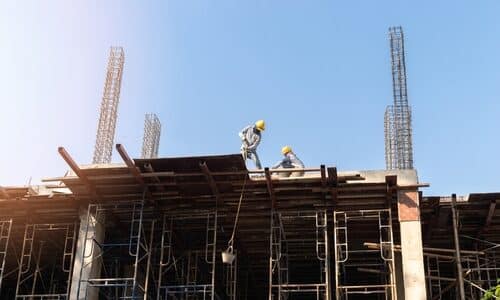The Future of Diversity: Gender Inequality in the Construction Industry
15/10/2022 - Van Ninja

When it comes to sectors that could still see a lot of improvement in gender equality, construction has a lot to work on. Macdonald & Company found from their 2019 Rewards and Attitudes survey that the gender pay gap in the industry at 20%, which is higher than the UK average of 18%.
This is the only one of the many reasons women could be deterred from entering the industry, on top of other pre-existing issues. The survey from 2019 found that 72% of female construction workers had been subject to some form of gender discrimination.
Here, with some insights from van leasing company, Van Ninja, we’ll examine where these stereotypes originate from and their impact on the industry. We will also look to the future and whether we’ll ever see an actual 50/50 split in the workforce.
Back to school – the root of sexist mentalities towards construction?
External perceptions are important for roles across all levels and industries. If it isn’t attractive to candidates, they’re less likely to apply and provide a strong work ethic or creative approach. Construction suffers from archaic stereotypes that create a negative stigma of every worker in the industry as guarded, gatekeeping misogynists with every role requiring manual labour.
This could be a huge factor contributing to why from a young age, girls and women are taught that construction is not an attractive career to pursue. The stereotype that women aren’t strong enough to work in the industry comes from sexism and a lack of truth.
This results in a gender gap in school subjects that could help obtain a degree or a position within the sector. Data from JCQ showed that A-Level subjects useful for construction, such as computer sciences, design and technology, maths, and physics, are heavily skewed with an overwhelming number of male students across the board.
How is this impacting the industry?
In the grand scheme, around 12.5% of the construction industry workforce in the UK consists of women, with most roles in engineering, design, and administrative positions. This statistic accounting for England, Scotland, Wales, and Northern Ireland, is staggering, as the industry is one of the largest contributors to the UK economy, with 3.1 million people employed in it.
Diversity and inclusion (D&I) are crucial to industry progression. Women and men think differently, meaning their creative approaches will always differ and could significantly contribute both to businesses and innovation. While there is comfort in the familiar, creativity and productivity could cast the industry net wider.
The future of diversity in construction
Construction is an industry that will never be short of work with large-scale projects that require experienced hands and minds to create. As a result, could we see a future where the workforce is not only split more evenly between men and women, but one where non-binary, gender fluid, and others whose gender identity differs from the traditional understanding, may feel comfortable?
There is still plenty of work to be done to make this even split a reality. The Office for National Statistics found that between July and December 2020, only 10% of people employed in the construction industry were women. Even though we’ve seen an increase of 2.5% over almost two years, a 50/50 of men and women working in the industry could still be a minimum of two decades away if it keeps growing at a similar rate.
The Construction Skills Network (CSN) found in their statistics that the UK will need to fill 210,000 jobs in the industry, and these could be filled by women and young jobseekers. Making these roles and the wider sector more attractive to potential candidates from such a young age, onboarding and outreach programs could be the key to bridging the gap and bringing in new workers. This could be done through introductory days where different roles are broken down into their bare essentials, from procurement of materials through suppliers or fleet solutions with van leasing, to structuring the work and building a timeline for when the job will be completed.
All articles on this news site are submitted by registered contributors of EssexWire. Find out how to subscribe and submit your stories here »



